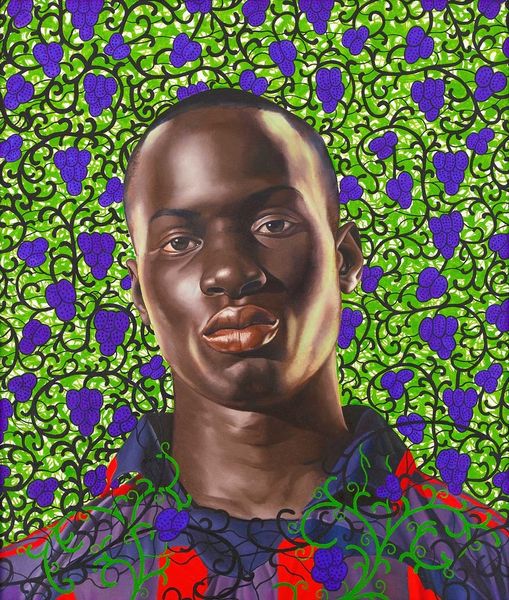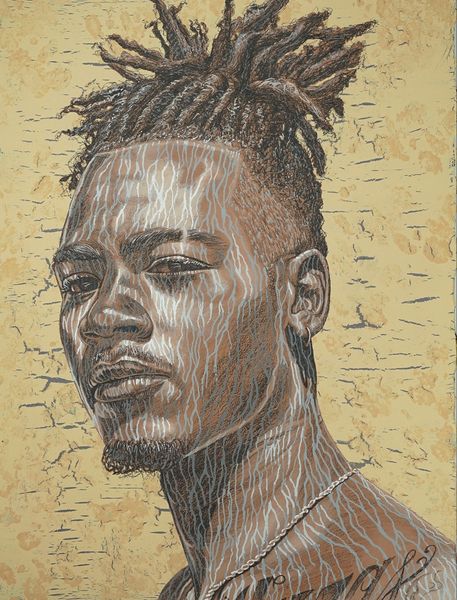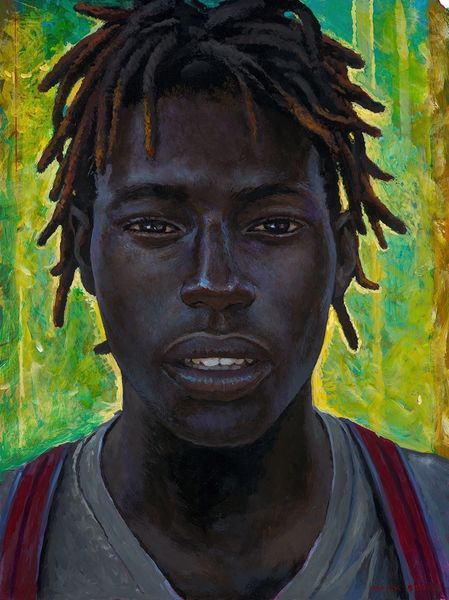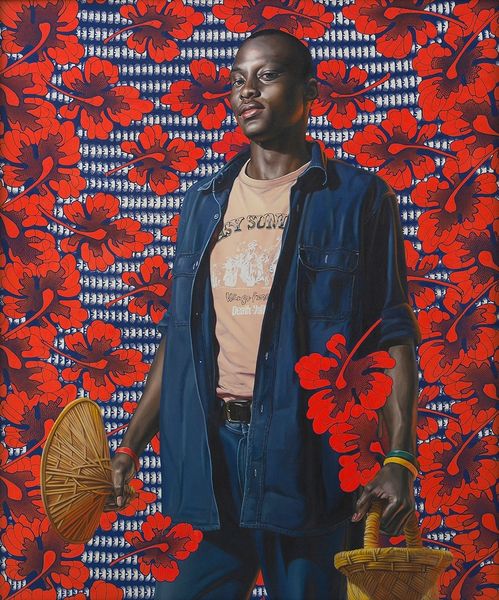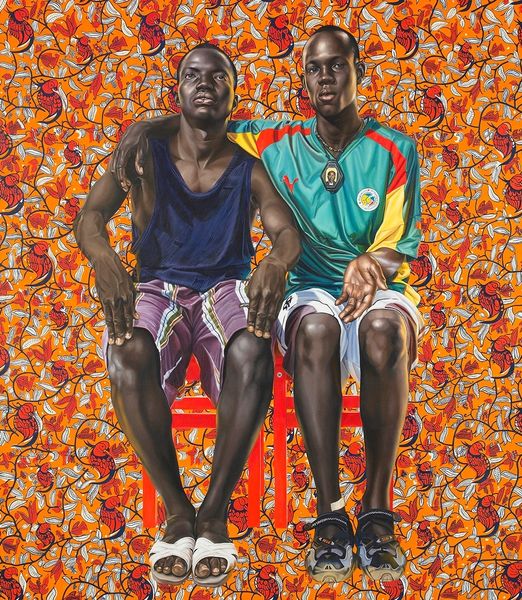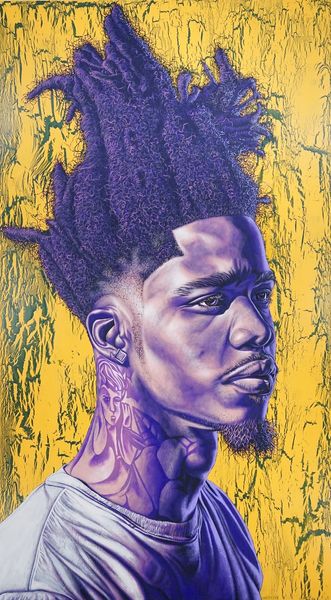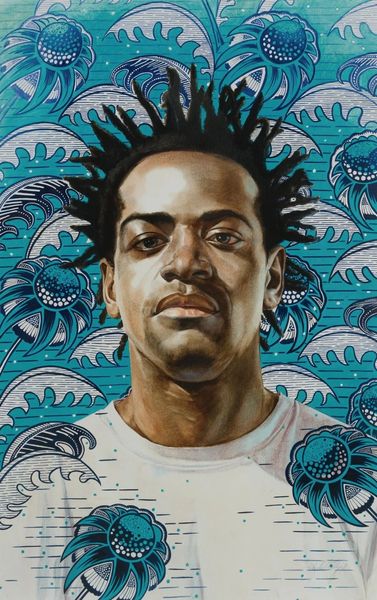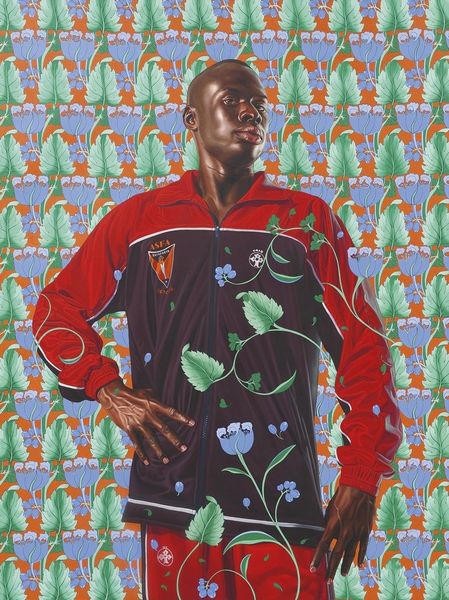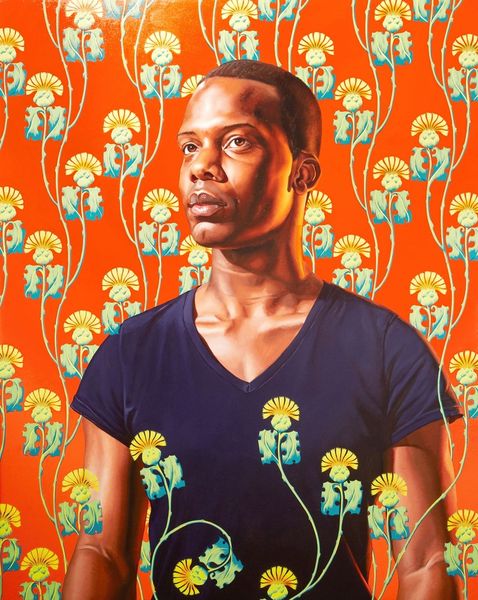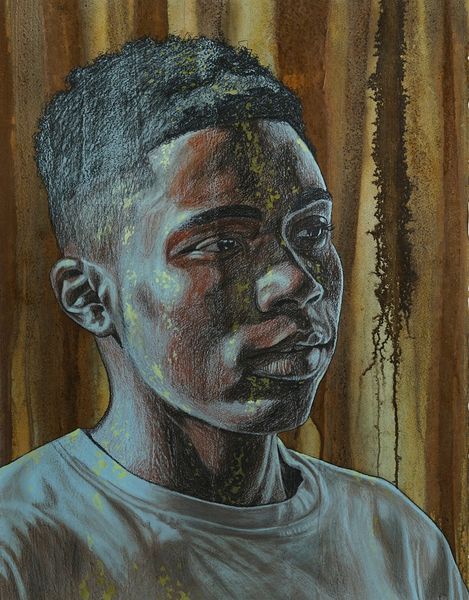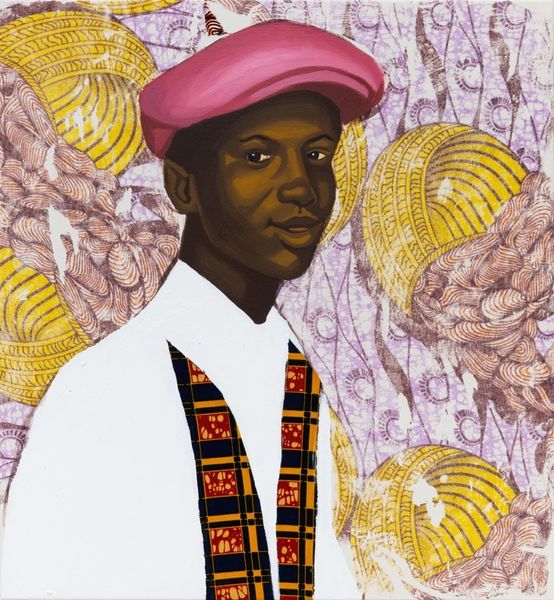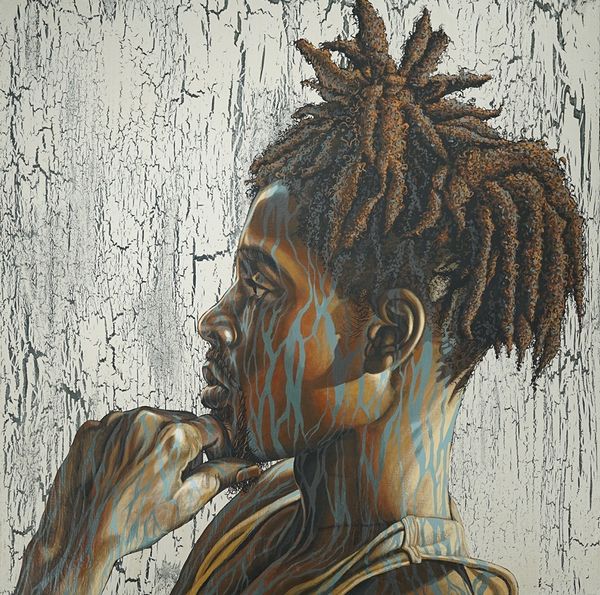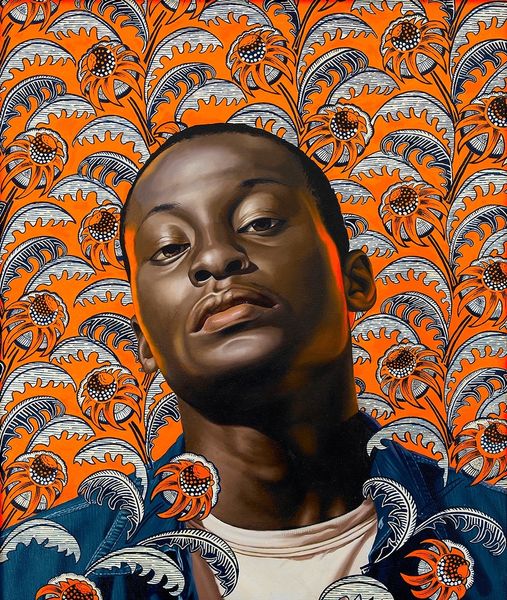
painting, oil-paint
#
portrait
#
pattern-and-decoration
#
african-art
#
figurative
#
contemporary
#
painting
#
oil-paint
#
figuration
#
portrait reference
#
portrait head and shoulder
#
portrait art
Copyright: Modern Artists: Artvee
Curator: Kehinde Wiley's 2007 piece, "Ibrahima Sacho II," immediately grabs you with its bold presence. What's your initial take? Editor: The portrait practically vibrates. It’s this incredible collision of formal, classical painting meeting vibrant, almost Pop Art, textiles. All that decorative energy pushing against the figure's...reserved gaze. What a setup. Curator: Precisely! Wiley juxtaposes the traditional European portraiture, you know, the kind of grand, aristocratic depictions, with contemporary young Black men he encounters. The ornate background here – a reproduction of West African fabric, I think – totally re-contextualizes the sitter. Editor: Absolutely, the choice of materials speaks volumes. Look at the oil paint, for instance. Historically linked with wealth and status, now being used to portray someone who likely comes from a very different background. Wiley is actively disrupting the art historical narrative. Curator: And not just disrupting, but celebrating. These aren’t passive portraits. The pose, the direct gaze...there's a clear sense of agency. It's like Wiley's saying, "These men deserve to be seen, to be monumentalized." The peacock-like design gives a feel of power. Almost regal. Editor: Right. Considering that these textiles are themselves products of complex trade relationships, global economies and their material consequences are ever present in his composition. So the choice isn't simply decorative; it embeds the subject within a specific system of production and consumption. And it's all painted meticulously. Curator: I’ve always been fascinated by how he sources his subjects too. It is almost always young men he sees in everyday settings, then invites to select a background from art history books and these patterned fabrics. This element of collaboration is crucial. The sitter gets to participate in their own representation. Editor: And that choice underscores the performative aspect of identity itself. We are not static objects; instead we actively choose what face to present to the world. This painting asks us to consider: What does it mean to see and be seen? Curator: For me, the painting hums with quiet power, a potent declaration. Editor: Indeed, it's an object lesson on how art can invite us to confront the visual economy in our daily lives.
Comments
No comments
Be the first to comment and join the conversation on the ultimate creative platform.
